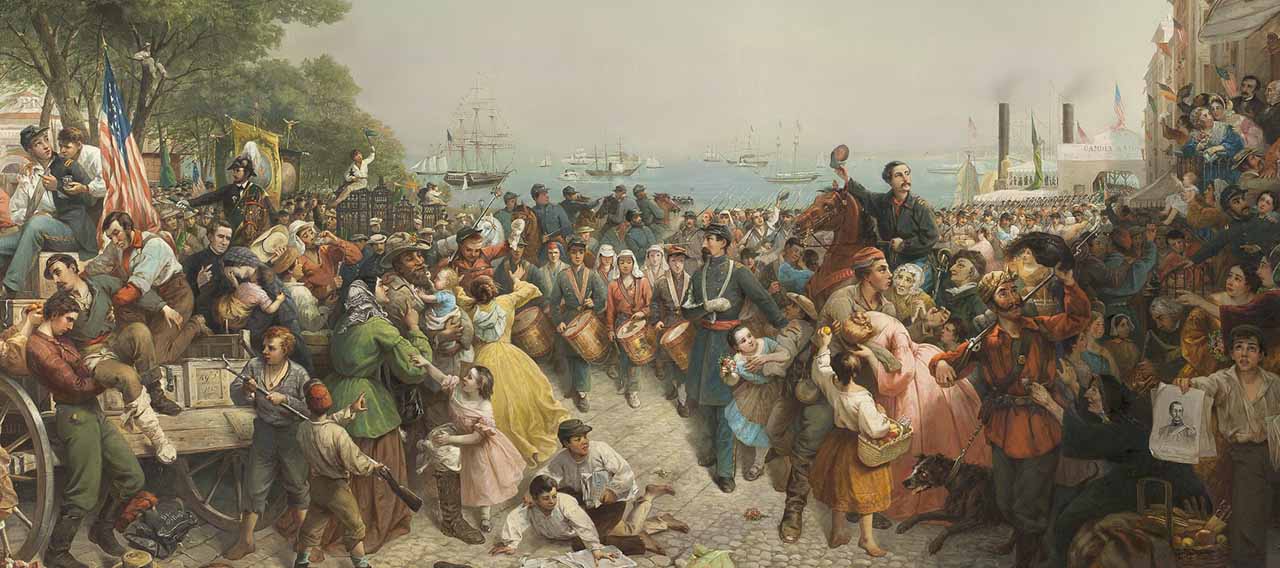Why Supporting Diverse Storytelling in Our Cultural Institutions is American AF

by Sughey Ramirez, Director of Cultural Strategies and Networks, The Opportunity Agenda
At The Opportunity Agenda (TOA), we know firsthand that arts and culture have a transformative power to create frameworks through which issues and ideas can become humanized and enter the mainstream. This understanding deeply informs our approach to advancing socially just narratives, and just as importantly, an inclusive democracy.
A thriving democracy that works for everyone calls for an honest and evolving view of history, widespread access to reliable information, and the free exchange of ideas. Artist, visionary thinker, and (until recently) Vice President of Social Impact at The Kennedy Center Marc Bamuthi Joseph tells us: “In order to fully participate in a democracy, you have to sublimate or oppress your apathy…the way to turn apathy into empathy is to infuse inspiration.” Cultural institutions as we know them are a critical vessel for that process and, right now, we are being called to protect them.
In this interview with Amy Goodman of Democracy Now, Bamuthi, an alum of our Creative Change Retreat and creative advisor to our Narrative Innovator Lab fellows, asks: “How can you be an American if you cannot hope?”
Late last month, a new Executive Order titled “Restoring Truth & Sanity to American History” outlined critical changes to the Smithsonian Institution. The Executive Order accuses institutions such as The National Museum of African American History and Culture and The Smithsonian American Women’s History Museum of “distorting” history with gender and race-based ideology, thereby standing in the way of inspiration and American values. But what’s more American than diverse and accessible storytelling?
When I first moved to New York, I served as The New-York Historical Society’s (now The New York Historical) first outreach coordinator. My job was to expand access to their innovative program, The Citizenship Project designed to help green card holders prepare for the USCIS naturalization exam through in-person classes. The program tackled all 100 possible questions through the museum’s collection of art and historical artifacts.
I remember standing before a painting titled “Return of the 69th (Irish) Regiment, N.Y.S.M. from the Seat of War” by Louis Lang for the first time. Like many of our students at The Citizenship Project, I initially knew nothing about this work. As someone who didn’t grow up frequenting museums, it took me a while to adjust to the high ceilings and looming frames, and to feel like I had permission to get close. Together, our students and I were encouraged to reflect on the scene and were equipped with the tools to do so honestly and critically.
Did you know this was painted by a German immigrant?
Did you know a lot of the people pictured weren’t actually present at the original scene?
Did you know the artist painted the image from memory?
Did you know Lang chose to include Irish women and children? Why might he have done that? Does this change your initial impressions?
This may sound strange, but as a Puerto Rican woman from Chicago who was moonlighting as a Twitter comedian (and might have meme’d the painting at some point) I appreciated being entrusted with all this information. I appreciated being treated as a thinking, evolving being with unique perspectives and opinions, capable of arriving at her own conclusions and making informed decisions. And I appreciated, perhaps for the first time, that I lived in a country where we encourage this — where it is safe to openly challenge and question and disagree. If that’s what it meant to be American, that’s the American I was eager to embrace alongside my peers.
Today, the Smithsonian Institution encompasses: a flagship museum, an education and research complex, 17 museums and a zoo in Washington, D.C., and two museums in New York City. All but one offer free admission.
Removing that financial barrier to entry is important, but the Executive Order this administration is imposing on America’s museums make such efforts toward accessibility almost obsolete. What does this order mean for diverse audiences? What does it mean for the type of artists who can or cannot show their work? What does it say about the critical thinking, collective learning, and personal inspiration welcome in these spaces?
By standing in the way of hope, imagination, and innovation, this administration’s Executive Order against museums directly threatens our country’s great tradition of creative freedom of expression. Our cultural institutions need us – now, more than ever. We can help by voicing our support for spaces that champion diverse and informed storytelling through their inclusion of artists from all backgrounds and identities. We must continue to patronize our local cultural spaces and speak out against efforts to censor the stories told within. Because, what’s more American than that?

